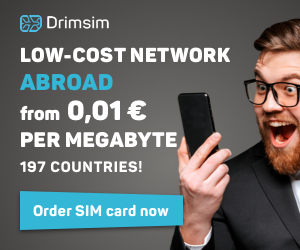Email marketing is a powerful tool for reaching out to potential and existing customers. However, to be successful, it’s important to have a solid strategy in place. In this article, we will discuss 24 strategies for effective email marketing campaigns. These strategies cover a wide range of topics, from personalization and segmentation, to design and deliverability. By implementing these strategies, you can increase engagement, conversions, and improve your email deliverability.
Secure your online presence with Atlas VPN
1. Personalize your emails by including the recipient’s name in the subject line or body of the email
Personalizing your emails by including the recipient’s name in the subject line or body of the email is a great way to increase engagement and make your emails more effective. By using the recipient’s name, you can make the email feel more personal and relevant, which can increase the chances that the recipient will open and engage with the email. Personalization can also help to build trust and establish a deeper connection with the recipient, which can lead to increased customer loyalty and sales.
There are a few different ways to personalize your emails, depending on the information that you have about your recipients. For example, you can include the recipient’s name in the subject line of the email, or you can use it in the greeting or introduction of the email body. You can also use other information, such as the recipient’s location or purchase history, to personalize the content of the email and make it more relevant to their interests.
Keep in mind that personalization should be used thoughtfully and sparingly, and not in a way that feels invasive or creepy. You should also be sure to obtain explicit consent from the recipient before sending them personalized emails, and to make it easy for them to opt-out of receiving personalized emails in the future.
2. Segment your email list to ensure that you are sending relevant messages to the right people
Segmenting your email list is a key strategy for using email marketing to increase sales. By dividing your email list into different groups based on factors such as demographics, behavior, or purchase history, you can ensure that you are sending relevant and targeted messages to different groups of people. This can help to increase engagement and conversions by sending the right message to the right person at the right time.
Examples of segmentation:
- Demographics: Based on age, gender, location, etc.
- Behavior: Based on website interactions, purchase history, email open rates, etc.
- Interests: Based on preferences and interests as expressed through surveys or sign-up forms.
By segmenting your email list, you can also create more targeted campaigns and offers that will be more likely to convert into sales. For example, if you have a group of customers who have shown an interest in a certain product or category, you can send them targeted emails with special offers or promotions for that product.
Additionally, by segmenting your list, you can also track the performance of your campaigns and see which segments are most responsive to your emails. This can help you to optimize your email marketing strategy and increase sales over time.
3. Use a clear and compelling subject line to encourage recipients to open the email
A clear and compelling subject line is an important element of an effective email marketing campaign. It’s the first thing that a recipient sees and it can often determine whether or not they open the email. A subject line that is well-written and relevant to the recipient can increase the chances of the email being opened and increase engagement.
Here are a few tips for writing effective subject lines:
- Be concise and to the point, most email clients will cut off subject lines that are too long
- Use action-oriented language, such as “Limited time offer” or “Don’t miss out”
- Use personalization, like including the recipient’s name or location
- Use numbers, such as “20% off” or “24 hour sale”
- Use urgency, for example, “Today only: 50% off”
- Use a sense of intrigue, for example “You won’t believe what’s inside”
It is also important to keep in mind that the subject line should be relevant to the content of the email. If the subject line promises something that the email doesn’t deliver, recipients may feel misled and may unsubscribe from your list.
Keep in mind that A/B testing your subject lines can be useful to see which performs better among different segments of your list.
4. Keep the design of your emails simple and easy to read
Keeping the design of your emails simple and easy to read is an important aspect of email marketing. A simple and clear design can help to increase engagement by making it easy for recipients to scan and read the email. It can also help to increase conversions by making it easy for recipients to find and interact with the call-to-action (CTA).
Here are a few tips for designing simple and effective emails:
- Use a clear and easy-to-read font
- Use a limited color palette to keep the design clean and uncluttered
- Use a consistent layout and design for all of your emails
- Use a clear and prominent CTA that stands out from the rest of the email
- Use images and graphics sparingly, and make sure they are properly optimized for fast loading
- Use a single column layout, which is easy to read on mobile devices
- Use white space to break up the text and make the email easier to read
It is also important to make sure that your emails are optimized for mobile devices. More and more people are checking their email on mobile devices, so it’s important to make sure that your emails look good and are easy to interact with on smaller screens.
Make sure that your emails are accessible to people with disabilities by including alt text for images and using a clear and simple design.
5. Use a clear call-to-action (CTA) in your emails to encourage recipients to take a specific action
A clear call-to-action (CTA) is an important element of email marketing, as it encourages recipients to take a specific action, such as making a purchase or signing up for a free trial. A clear and prominent CTA can increase conversions by making it easy for recipients to understand what they should do next.
Here are a few tips for designing effective CTAs:
- Use action-oriented language, such as “Shop now” or “Sign up today”
- Make the CTA stand out from the rest of the email, for example by using a contrasting color
- Make the CTA easy to find, for example by placing it above the fold or in multiple locations throughout the email
- Use a sense of urgency, for example “Limited time offer”
- Use a sense of exclusivity, for example “For VIP members only”
It’s also important to test different versions of your CTA to see which performs the best. A/B testing can help you to optimize your CTA for the highest click-through rate.
Additionally, make sure the CTA is relevant to the email content and the recipient’s interests. Sending an irrelevant CTA could lead to a low click-through rate and even unsubscribes.
6. Optimize your emails for mobile devices to ensure that they look good and are easy to interact with on smaller screens
Optimizing your emails for mobile devices is an important aspect of email marketing. With more and more people checking their email on mobile devices, it’s important to make sure that your emails look good and are easy to interact with on smaller screens.
Here are a few tips for optimizing your emails for mobile:
- Use a single column layout, which is easy to read on mobile devices
- Keep the email design simple and uncluttered, so it’s easy to read on small screens
- Use a clear and prominent call-to-action (CTA), so it’s easy to interact with on a small screen
- Use large and easy-to-tap buttons for links and CTAs
- Use a responsive design, so that your emails will adjust to the size of the screen they’re being viewed on
- Test your emails on different devices and email clients to ensure that they look good and are easy to interact with
It is also important to make sure that your emails are properly coded and will render correctly in the most popular email clients. Email clients like Gmail, Outlook, and Apple Mail all have different ways of rendering emails, so it’s important to test your emails to ensure that they look good and are easy to interact with on all of these platforms.
Make sure that your emails are accessible to people with disabilities by including alt text for images and using a clear and simple design.
7. Test your emails to see which subject lines, designs, and CTAs perform the best
Testing your emails is an important step in optimizing your email marketing strategy and increasing engagement and conversions. A/B testing, also known as split testing, is a method of comparing two versions of an email to see which performs better. By testing different elements of your emails, such as subject lines, designs, and CTAs, you can determine which strategies are most effective and optimize your email marketing strategy accordingly.
Here are a few things you can test in your emails:
- Subject lines: Test different subject lines to see which ones have the highest open rate
- Designs: Test different designs to see which ones have the highest click-through rate
- Call-to-action (CTA): Test different CTAs to see which ones have the highest conversion rate
- Timing: Test sending emails at different times to see when your audience is most engaged
- Segmentation: Test different segmentation strategies to see which ones lead to the highest engagement and conversion rates
When conducting A/B testing, it’s important to make sure that you are testing only one variable at a time, and to send the test to a representative sample of your email list. Additionally, it’s important to track and analyze the results of your tests to determine which strategies are most effective and to make data-driven decisions about your email marketing strategy.
Keep in mind that testing is an ongoing process, and you should always be looking for new ways to improve your email marketing strategy.
8. Use A/B testing to optimize your emails for the highest open and click-through rates
A/B testing, also known as split testing, is a method of comparing two versions of an email to see which performs better. By testing different elements of your emails, such as subject lines, designs, and CTAs, you can determine which strategies are most effective and optimize your email marketing strategy accordingly.
A/B testing is an effective way to optimize your email marketing strategy for the highest open and click-through rates. By testing different versions of your emails, you can determine which subject lines, designs, and CTAs are most effective at getting recipients to open and interact with your emails. This can help you to improve the performance of your emails over time and increase conversions.
A/B testing can be done in a number of ways, such as:
- Random sampling: Sending two different versions of the email to a random sample of your email list.
- Multivariate testing: Testing multiple variables of an email at once.
- Multi-armed bandit testing: Testing multiple versions of an email and sending the best-performing one to the majority of the email list.
It’s important to note that A/B testing is an ongoing process, and you should always be looking for new ways to improve your email marketing strategy. Additionally, it’s important to track and analyze the results of your tests to determine which strategies are most effective and to make data-driven decisions about your email marketing strategy.
9. Use automation to send targeted and timely emails to different segments of your list
Using automation in email marketing can help to send targeted and timely messages to different segments of your list. Automation can also help to save time and effort by automating repetitive tasks such as sending welcome emails, abandoned cart emails, or birthday emails.
There are a few ways to automate your email marketing:
- Triggered emails: These are messages that are automatically sent to a subscriber based on a specific action or behavior, such as signing up for a newsletter or abandoning a shopping cart.
- Drip campaigns: These are a series of automated emails that are sent out to a subscriber over a period of time, such as a welcome series or a product education series.
- Lead nurturing: This is the process of automating a series of messages that are sent to a lead based on their behavior and actions, such as website visits or email opens.
Marketing automation software can help you to set up and manage your automated email campaigns. These platforms usually have a wide range of pre-built automation workflows that can be customized to suit your business needs. They also provide detailed analytics and reporting to help you track the performance of your automated campaigns and make data-driven decisions about your email marketing strategy.
It’s important to keep in mind that while automation can save time and effort, it’s also crucial to personalize the message and to use the data collected to segment the list correctly. This way the message will be relevant to the recipient and increase chances of engagement.
10. Use marketing automation software to track and analyze the performance of your emails
Using marketing automation software to track and analyze the performance of your emails is an important aspect of email marketing. This software allows you to track key metrics such as open rates, click-through rates, and conversion rates, which can help you to optimize your effective email marketing strategy and increase engagement and conversions.
Here are a few key metrics that you can track with marketing automation software:
- Open rates: The percentage of recipients who opened your email
- Click-through rates: The percentage of recipients who clicked on a link in your email
- Conversion rates: The percentage of recipients who completed a specific action, such as making a purchase or signing up for a free trial
- Bounce rates: The percentage of emails that were undeliverable and returned to sender
- Spam complaint rates: The percentage of recipients who marked your email as spam
- Unsubscribe rates: The percentage of recipients who unsubscribed from your list
Marketing automation software can also help you to segment your email list and send targeted messages to different groups of people. This can help to increase engagement and conversions by sending the right message to the right person at the right time. Additionally, automation software can help you to set up and manage automated email campaigns, such as triggered emails and drip campaigns.
It’s important to analyze the data and use it to make data-driven decisions about your email marketing strategy. This way you can optimize your campaigns and improve the ROI of your email marketing efforts.
11. Make sure that your emails are accessible to people with disabilities by including alt text for images and using a clear and simple design
Making sure that your emails are accessible to people with disabilities is an important aspect of email marketing. By including alt text for images, using a clear and simple design, and ensuring that your emails can be navigated using keyboard shortcuts, you can ensure that your emails are accessible to a wider audience, including people with visual, motor, and cognitive impairments.
Here are a few tips for making your emails more accessible:
- Use alt text for images: This provides a text-based description of the image for people who use screen readers or have images turned off in their email client.
- Use a clear and simple design: A simple design with a limited color palette, easy-to-read fonts, and good contrast can make your emails more accessible to people with visual impairments.
- Ensure that your emails can be navigated using keyboard shortcuts: This allows people who can’t use a mouse or trackpad to interact with your emails.
- Use proper semantic HTML: This ensures that the structure of your email is clear and logical, which can help people who use screen readers to navigate your email.
- Include a plain text version of your email: Some email clients and accessibility tools only support plain text, so providing a plain text version of your email can ensure that everyone can read it.
It’s also important to keep in mind that accessibility is an ongoing process and it’s important to stay up-to-date
12. Keep the focus on the recipient and not on yourself, avoid using “I” or “We” too much
Keeping the focus of your emails on the recipient, rather than on yourself or your company, is an important aspect of effective email marketing. By focusing on the recipient’s needs and interests, you can increase engagement and conversions.
Here are a few ways to keep the focus on the recipient in your emails:
- Use “you” and “your” instead of “I” and “we”
- Speak to the recipient’s pain points and address how your product or service can help to solve them
- Show the recipient how they will benefit from your product or service
- Use personalization to tailor the content of the email to the recipient’s interests or behavior
- Use customer testimonials or success stories to show the benefits of your product or service
It’s important to keep in mind that the recipient is the most important aspect of your email marketing efforts, and by keeping the focus on them, you can increase engagement and conversions. Additionally, by avoiding too much use of “I” or “We” it will give the impression that you are more interested in the recipient’s needs and less interested in promoting yourself.
Remember to keep the recipient’s perspective in mind when writing your emails, and always think about how the content will be received and perceived by them.
13. Use a consistent “From” name and address for all of your emails
Using a consistent “From” name and address for all of your emails is an important aspect of building trust and credibility with your audience. By using the same “From” name and address for all of your emails, your audience will know who the email is coming from and will be more likely to open and engage with your emails.
Here are a few tips for using a consistent “From” name and address:
- Use a professional and recognizable “From” name, such as the name of your company or a specific individual within your company
- Use the same “From” name and address for all of your emails, including your newsletter, promotional emails, and transactional emails
- Avoid using generic or unfamiliar “From” names, such as “no-reply” or “marketing@company.com”
- Use a consistent email address format, such as “info@company.com” or “sales@company.com”
- Use a personal email address for your “From” name and address for a more personal touch.
It’s important to keep in mind that the “From” name and address are often the first thing that the recipient sees, and it can be the deciding factor on whether they open the email or not. Additionally, by using a consistent “From” name and address, you can increase the chances that your emails will be recognized as legitimate and not as spam.
Be sure to not use a “From” name and address that can be easily confused with a scam or phishing email, this can lead to your email being marked as spam or deleted without being opened.
14. Send your emails at the right time, when your audience is most likely to be checking their inbox
Sending your emails at the right time is an important aspect of email marketing. By sending your emails when your audience is most likely to be checking their inbox, you can increase the chances that they will open and engage with your emails.
Here are a few tips for sending your emails at the right time:
- Use data from your email marketing software to determine the best time to send your emails. Most email marketing software provides data on open rates, click-through rates, and conversion rates for each day and time of the week.
- Test different sending times to determine the best time to send your emails
- Consider the time zone of your audience and send your emails at a time when they are most likely to be checking their inbox.
- Take into account the type of content of your email and the intended call-to-action (CTA). For example, if your email is an invitation for an event, you should send it in advance, so the recipient has enough time to plan.
- Keep in mind that the best sending time may vary depending on the type of email, the audience and the campaign goal.
It’s important to keep in mind that the best sending time can vary depending on the type of email, the audience, and the campaign goal. Additionally, it’s important to keep testing and analyzing the data to determine the best sending time for your specific audience and to adjust your sending schedule accordingly.
Remember that it’s not only about the day and time, but also the frequency. Sending too many emails can lead to unsubscribes, lower engagement, and ultimately, lower conversions.
15. Keep your emails short and to the point, avoid including too much text
Keeping your emails short and to the point is an effective way to increase engagement and conversions. By providing clear and concise information, you can ensure that your emails are easily readable and that the recipient is more likely to take action.
Here are a few tips for keeping your emails short and to the point:
- Use short paragraphs and sentence
- Use bullet points and numbered lists to break up large blocks of text
- Use subheadings and bold text to emphasize important points
- Use images and graphics to supplement text and break up the design
- Use a clear and action-oriented call-to-action (CTA)
- Avoid using jargon or complex language
It’s important to keep in mind that most people have a short attention span and they will likely not read a long email. Additionally, a shorter email will be more likely to be read and acted upon.
Remember that the goal of an email is to get the recipient to take action, whether it’s to make a purchase, sign up for a service, or learn more about your company. By keeping your emails short and to the point, you can increase the chances that the recipient will take the desired action.
16. Use a clear and recognizable logo in your emails to increase brand awareness
Using a clear and recognizable logo in your emails is an important aspect of building brand awareness and recognition. A logo can help to create a visual association between your brand and the products or services you offer.
Here are a few tips for using a logo in your emails:
- Use a high-resolution logo that is clear and easy to read
- Place your logo in a consistent location in all of your emails
- Use your logo as a link to your website
- Use your logo in the header or footer of your emails
- Use your logo to create a branded template for your emails
It’s important to keep in mind that a logo should be easily recognizable and should be consistent with your branding across all channels. Additionally, a logo can help to increase the chances that your emails will be recognized as legitimate and not as spam.
Remember that your logo should be easily recognizable and should be consistent with your branding across all channels. Additionally, using a logo in your emails can help increase brand recognition and awareness, which can lead to more conversions and sales.
17. Make sure that your emails are easy to unsubscribe from, include an unsubscribe link in every email
Making sure that your emails are easy to unsubscribe from is an important aspect of an effective email marketing. By including an unsubscribe link in every email, you can ensure that your audience has the option to unsubscribe if they no longer wish to receive your emails. This can help to maintain the integrity of your email list and ensure that you are only sending emails to people who are interested in your products or services.
Here are a few tips for making it easy to unsubscribe:
- Include an unsubscribe link in every email
- Make the unsubscribe process simple and straightforward
- Include the unsubscribe link in a clear and conspicuous location in your emails
- Make sure that the unsubscribe link is prominent and easy to spot
- Use a double opt-in process to ensure that you are only sending emails to people who have explicitly requested to receive your emails.
It’s important to keep in mind that when someone unsubscribes from your emails, it’s not necessarily a bad thing. It could mean that the email is no longer relevant to that person or that they are no longer interested in your products or services. Additionally, by making it easy for people to unsubscribe, you can reduce the number of spam complaints and increase the chances that your emails will be delivered to the inbox.
It’s important to comply with laws regarding email marketing such as the CAN-SPAM Act, which require that you provide an unsubscribe mechanism.
18. Use social media to promote your email campaigns and encourage people to sign up for your list
Using social media to promote your email campaigns and encourage people to sign up for your list is an effective way to increase the size of your email list and reach a wider audience. By promoting your email campaigns on social media, you can drive more traffic to your website and increase the chances that people will sign up for your email list.
Here are a few ways to use social media to promote your email campaigns:
- Include a sign-up form or link to your email list on your social media profiles
- Use social media to promote your email newsletter, including the benefits of signing up and the types of content that will be included
- Use social media to share exclusive content or promotions that are only available to email subscribers
- Use social media to encourage current email subscribers to share your emails with their friends and followers
- Use social media to run contests or giveaways that incentivize people to sign up for your email list
It’s important to keep in mind that each social media platform has its own unique audience and features, so it’s important to tailor your approach to each platform. Additionally, it’s important to be consistent with your messaging across all platforms to ensure that your audience recognizes your brand and is more likely to sign up for your email list.
Remember that social media can be a great way to drive more traffic to your website and increase the size of your email list. By integrating social media with your email marketing strategy, you can reach a wider audience and increase engagement and conversions.
19. Make sure that your emails are properly coded and will render correctly in the most popular email clients
Making sure that your emails are properly coded and will render correctly in the most popular email clients is an important aspect of email marketing. By using proper coding techniques, you can ensure that your emails will be displayed correctly across a wide range of email clients and devices, including desktop and mobile devices.
Here are a few tips for coding your emails correctly:
- Use a responsive design to ensure that your emails will display correctly on different devices and screen sizes
- Use a table-based layout to ensure that your emails will display correctly in email clients that do not support CSS
- Use inline CSS to ensure that your emails will display correctly in email clients that do not support external stylesheets
- Use a tool to test your emails across different email clients and devices to ensure that they are displaying correctly
- Use the most recent version of the email client to ensure that your emails will display correctly on that platform
It’s important to keep in mind that different email clients and devices can display emails differently, so it’s important to test your emails across a variety of different platforms to ensure that they are displaying correctly. Additionally, it’s important to keep your coding up to date with the latest standards and to test your emails in the most popular email clients like Gmail, Outlook, Yahoo and Hotmail to ensure that your emails look good and readable in all of them.
By making sure that your emails are properly coded and will render correctly in the most popular email clients, you can increase the chances that your emails will be read and acted upon, which can lead to more conversions and sales.
Using a reputable email service provider (ESP) is an important aspect of email marketing. ESPs help to ensure that your emails will be delivered to the inbox by providing tools and services that help to improve deliverability, such as email list management, email design, and email tracking.
Here are a few tips for choosing a reputable ESP:
- Look for an ESP that has a good reputation and is known for providing high deliverability rates
- Look for an ESP that offers list management tools to help you segment your email list and improve deliverability
- Look for an ESP that offers email design and coding templates to help you create professional-looking emails
- Look for an ESP that offers email tracking and reporting tools to help you measure the success of your email campaigns
- Look for an ESP that offers customer support and resources to help you troubleshoot any issues you may have
It’s important to keep in mind that using a reputable ESP can help to increase the chances that your emails will be delivered to the inbox, which can lead to more conversions and sales. Additionally, a good ESP can help you in many aspects of your effective email marketing campaigns, such as design, deliverability and reporting.
It’s important to do your research and choose an ESP that can meet your specific needs, whether it’s a large scale enterprise solution or a small business solution. Additionally, it’s important to choose an ESP that is compliant with the laws regarding email marketing such as the CAN-SPAM Act, to ensure that you are not breaking any laws and regulations.
21. Use trigger-based emails to reach out to subscribers at specific points in their customer journey
Trigger-based emails are automated emails that are sent to subscribers at specific points in their customer journey. These emails can be triggered by a variety of actions, such as signing up for a newsletter, making a purchase, abandoning a shopping cart, or reaching a certain milestone in a loyalty program.
Here are a few examples of trigger-based emails:
- Welcome email: Sent to new subscribers after they sign up for a newsletter
- Abandoned cart email: Sent to customers who add items to their shopping cart but do not complete the purchase
- Order confirmation email: Sent to customers after they make a purchase
- Shipping confirmation email: Sent to customers when their order has been shipped
- Re-engagement email: Sent to inactive subscribers in an attempt to re-engage them
Using trigger-based emails can be an effective way to increase engagement and conversions by reaching out to subscribers at specific points in their customer journey. Additionally, it can be a powerful tool for personalizing the customer experience and building a relationship with your subscribers.
It’s important to keep in mind that trigger-based emails should be timed correctly, personalized, and have a clear call-to-action (CTA) to encourage the desired behavior from the subscriber. Also, it’s important to test and optimize your trigger-based emails to ensure that they are delivering the desired results.
By using trigger-based emails, you can create a more personalized and relevant experience for your subscribers, which can lead to increased engagement and conversions.
22. Use dynamic content in your emails to personalize the message and increase engagement
Dynamic content is a way to personalize the message and increase engagement in your emails by including personalized or contextually relevant content. This can be done by using information such as the recipient’s name, location, browsing or purchase history, or other data to create a more personalized and relevant email experience.
Here are a few examples of how to use dynamic content in your emails:
- Personalized subject lines: Use the recipient’s name or location in the subject line to make the email more relevant
- Personalized greetings: Use the recipient’s name in the greeting to make the email more personal
- Personalized product recommendations: Use browsing or purchase history to recommend products that the recipient is more likely to be interested in
- Personalized images: Use the recipient’s location or browsing history to display images that are more relevant to them
- Personalized call-to-action (CTA): Use the recipient’s browsing or purchase history to create a more relevant CTA
It’s important to keep in mind that dynamic content can help to increase engagement and conversions by providing a more personalized and relevant experience for the recipient. Additionally, it can help to improve the open and click-through rates of your emails by making them more relevant to the recipient.
It’s important to use data responsibly, and to comply with laws such as the General Data Protection Regulation (GDPR) or the California Consumer Privacy Act (CCPA) when using personal data. Additionally, it’s important to test and optimize your dynamic content to ensure that it’s delivering the desired results.
23. Use a double opt-in process to ensure that only interested people are on your list
A double opt-in process is a method of confirming that a person wants to receive emails from you by requiring them to confirm their email address before they are added to your email list. This process ensures that only interested people are on your list and can help to improve the quality of your email list by reducing the number of invalid or unengaged email addresses.
Here’s how the double opt-in process works:
- A person provides their email address by filling out a form on your website or signing up through a landing page.
- An email is sent to the provided email address with a link to confirm their subscription.
- The person clicks on the confirmation link in the email, which confirms that they want to receive emails from you.
- Only after the person confirms their email address, they are added to your email list.
It’s important to keep in mind that using a double opt-in process can help to ensure that your email list is composed of people who are truly interested in your products or services. Additionally, it can help to reduce the number of spam complaints and increase the chances that your emails will be delivered to the inbox.
It’s important to comply with laws regarding email marketing such as the CAN-SPAM Act, which requires that you give people the option to unsubscribe from your emails. A double opt-in process can help you to comply with this law, by ensuring that only interested people are on your list and that they have given explicit consent to receive your emails.
24. Keep track of your spam complaints and unsubscribes, and adjust your strategy accordingly
Keeping track of your spam complaints and unsubscribes is an important aspect of email marketing. By monitoring these metrics, you can identify and address issues that may be causing recipients to mark your emails as spam or unsubscribe from your list.
Here are a few tips for keeping track of spam complaints and unsubscribes:
- Use effective email marketing software that tracks spam complaints and unsubscribes
- Review your spam complaints and unsubscribes on a regular basis
- Look for patterns or common issues that may be causing recipients to mark your emails as spam or unsubscribe
- Adjust your email strategy accordingly to address any issues that may be causing recipients to mark your emails as spam or unsubscribe.
It’s important to keep in mind that high rates of spam complaints or unsubscribes can negatively impact the deliverability of your emails. Additionally, it can also indicate that your email list is not engaged or that your emails are not relevant to your audience.
Finally, it’s important to keep track of your spam complaints and unsubscribes and to adjust your strategy accordingly. By monitoring these metrics, you can ensure that your email list is engaged and that your emails are relevant to your audience. This can help to increase engagement, conversions and improve your email deliverability.
In conclusion, effective email marketing requires a solid strategy and a good understanding of best practices. The 24 strategies discussed in this article can help you to increase engagement, conversions, and improve your email deliverability. From personalization and segmentation, to design and deliverability, these strategies cover a wide range of topics that are essential to the success of any email marketing campaign. Remember, it’s important to constantly evaluate and adjust your strategy as needed to ensure that your emails are reaching the right audience and achieve your desired results. By implementing these strategies, you can effectively reach out to potential and existing customers, and grow your business.









